#Yves Allegret
Text

Une si jolie petite plage (Yves Allégret, 1949)
#Une si jolie petite plage#Yves Allégret#Yves Allegret#1949#Such a Pretty Little Beach#black and white#quote#film noir#Madeleine Robinson#Gérard Philipe#loneliness#feeling#feelings#Gerard Philippe
292 notes
·
View notes
Text









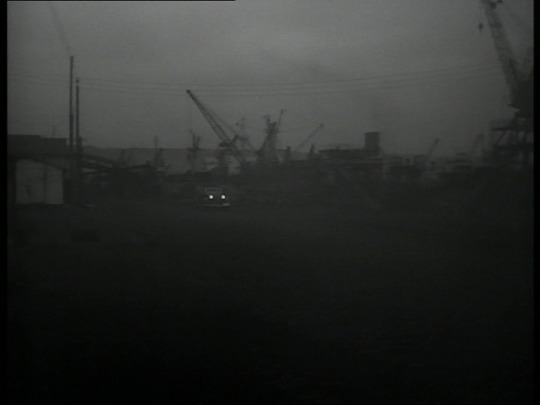
dedee d'anvers 1948
1 note
·
View note
Text
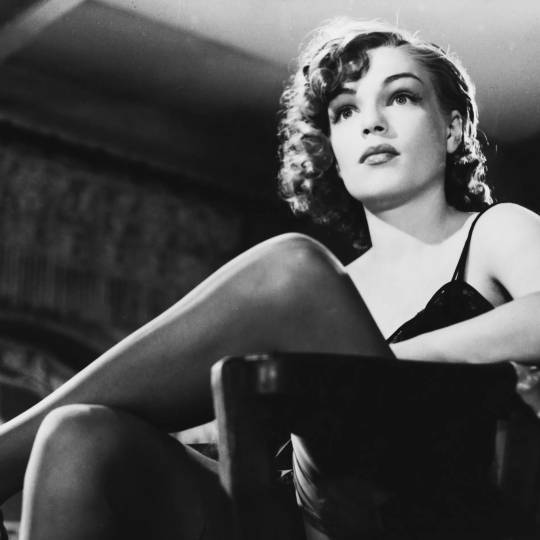
John Springer. Simone Signoret in the film ''Dédée d'Anvers'' directed by Yves Allegret, 1947.
121 notes
·
View notes
Note
Hi, how are you today, madame ?
Would you happen to know of any classical French movies that are available on YouTube or Netflix ?
( I've alredy watched "les diabolique(1950)" and "la bete et la belle" (1940) )
Hello, madame is great thank you!
Sadly I can't help with Netflix because your location matters. This list of free (i.e. less popular for most of them) Youtube movies will not be complete at all (although the suggestions (and my #cinema tag) will give you much more) and some of the links might become obsolete in the future but here it is:
Marius - Alexander Corda, 1931
L'aigle à deux têtes - Jean Cocteau, 1948
Les diaboliques - Henri-George Clouzot, 1950
Et Dieu créa la femme - Roger Vadim, 1956
Crésus - Jean Giono, 1960
La vérité - Henri-George Clouzot, 1960
Germinal - Yves Allegret, 1963
La grande frousse - Jean-Pierre Mocky, 1964
Fantomas - André Hunebelle, 1964
Fantomas se déchaîne - André Hunebelle, 1965
Belle de jour - Luis Bunuel, 1967
Jo - Jean Girault, 1971
Le vieux fusil - Jean Caro, 1975
Hope this helps! x
youtube
107 notes
·
View notes
Text
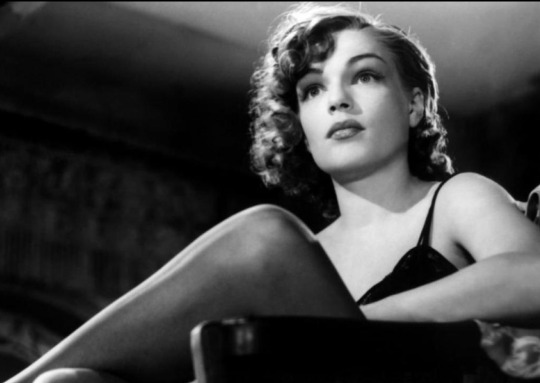
simone signoret.
dedee d'anvers, yves allegret, 1948.
7 notes
·
View notes
Text

Pier Angeli-François Guérin "Mademoiselle Nitouche" (Man´zelle Nitouche) 1954, de Yves Allegret.
7 notes
·
View notes
Photo
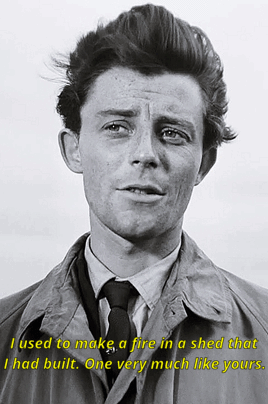
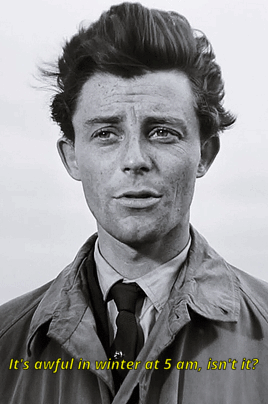
Une si jolie petite plage (Yves Allégret, 1949)
#gérard philipe#yves allégret#une si jolie petite plage#gerard philipe#yves allegret#such a pretty little beach#film
38 notes
·
View notes
Photo

Michèle Morgan on the set of ‘Oasis’ (Yves Allégret, 1955)
2 notes
·
View notes
Photo

Princess Grace of Monaco congratulating Catherine Allegret, Yves Montand, Claude Sautet, and back row Serge Reggiani, during the premiere of film Vincent, Francois, Paul et les autres in Monte Carlo. October 4, 1974.
#french#french cinema#princess grace#grace kelly#catherine allegret#yves montand#claude sautet#serge reggiani#monte carlo#monaco#1970s#the 1975
5 notes
·
View notes
Text
Alain Delon’s Unrequited Love Affair with Hollywood By Raquel Stecher

With his piercing blue eyes, aloof demeanor and natural charisma, it was inevitable that French actor Alain Delon would become an international sensation. The suave French film star became known for playing brooding anti-heroes on both sides of the law. He catapulted to fame in Rene Clement’s PURPLE NOON (’61), the sun-baked drama based on Patricia Highsmith’s celebrated mystery novel. Other plum roles came his way including films such as the art-house darling L’ECLISSE (’62) and acclaimed crime dramas ANY NUMBER CAN WIN (’63), LE SAMOURAI (’67) and BORSALINO (’70).
When Delon got his start, he was a fresh face in a new era of celebrity and filmmaking. Delon’s good looks, fashion sense, his many romantic affairs with some of the most beautiful women in the world and his real-life connections to dangerous gangsters all added to his mystique. In his prime, Delon was a huge box-office star not only in France but throughout Europe. As his celebrity grew, he found fans in Japan, China and Russia. But there was always one market that was missing in Delon’s portfolio: Hollywood.
Hollywood came knocking at the very beginning of Delon’s acting career, even before he was an actor. After a tumultuous upbringing and years of youthful rebellion that culminated with being dishonorably discharged from the French Marines, Delon found himself in Paris where he took numerous odd jobs. It was there he befriended local up-and-coming actors, one of whom invited him to go to the Cannes Film Festival. Henry Wilson, David O. Selznick’s talent scout, spotted Delon there and had him do a screen test in Rome. Selznick offered Delon a contract with the provision that Delon must learn English beforehand. Delon signed the contract but later backed out of it when his actor friends introduced him to French film director Yves Allegret. Allegret became Delon’s mentor, guiding him to develop a natural style of acting telling Delon “don’t act, live!” Delon got his first acting role in WHEN THE WOMAN BUTTS IN (’57) and the rest is history.
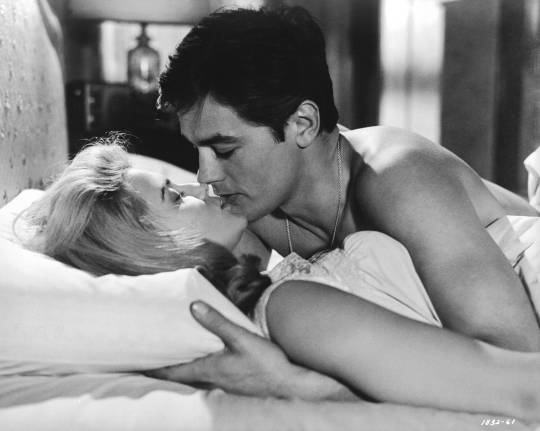
Even with the success of the French and Italian productions Delon starred in, he always had it in the back of his mind that the apex of his career would find him making films in Hollywood. When he was nominated for a Golden Globe for his performance in Luchino Visconti’s THE LEOPARD (’63), Hollywood came knocking again. He tested the waters with the UK produced ensemble film THE YELLOW ROLLS-ROYCE (’64), in which he plays opposite Shirley MacLaine and George C. Scott in one of the story’s three vignettes. After several failed negotiations, including a role in a Sam Peckinpah production that never came to fruition, Delon snagged the lead role in the American film noir style drama ONCE A THIEF (’65). The project was quite similar to ANY NUMBER CAN WIN and even shared the same writer, Zekial Marko. However, the film did modestly well in the States and fared better overseas. It was even premiered in Tokyo to capitalize on Delon’s international fame.
Other roles in English-speaking films came his way including parts in the war drama IS PARIS BURNING? (’66), the silly Western spoof starring Rat Pack members Dean Martin and Joey Bishop TEXAS ACROSS THE RIVER (’66), the sexy British drama THE GIRL ON A MOTORCYCLE (’68) and the Spaghetti Western starring Charles Bronson and Toshiro Mifune RED SUN (’71). Most of these films did modestly in the American market but fared better in other countries where Delon was a more established star. Delon was considered for parts in FANNY (’61), LAWRENCE OF ARABIA (’62), THE LOVED ONE (’65), THIS PROPERTY IS CONDEMNED (’66) and GUNS FOR SAN SEBASTIAN (’68), none of which happened.
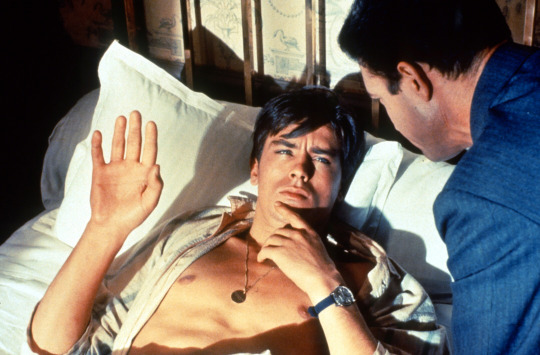
In the 1970s, Delon made two more concerted efforts to break into the Hollywood scene. He reunited with Burt Lancaster, his co-star in THE LEOPARD, for the CIA spy thriller SCORPIO (’73). Then there was THE CONCORDE… AIRPORT ’79 (’79), the fourth entry in the popular AIRPORT franchise. This film did so poorly that it put the nail in the coffin to both the AIRPORT films and Delon’s Hollywood career.
So what went wrong? Why was Alain Delon, who enjoyed fame around the globe, unable to make a splash in Hollywood? The answer to this is complicated. For one, American audiences are notoriously finicky and sometimes international success doesn’t guarantee box-office clout. Also, Hollywood is known for getting in its own way and many success stories have come from talent who were able to transcend limitations. Delon was given smaller roles in films with ensemble casts or very strong lead actors such as Burt Lancaster, Anthony Quinn, Charles Bronson and Jack Palance who overshadowed Delon on screen. These parts were beneath what he was capable of.
Delon’s accent was another barrier to entry even though he spoke English well and his accent gave him an air of sophistication. It’s very difficult for French speaking actors to break into Hollywood. There are a few notable exceptions such as Louis Jourdan, Charles Boyer and Maurice Chevalier. But those stars didn’t have Delon’s brand of masculinity and sexual prowess, that was highly prized in France and elsewhere but was not as appealing in the States. In the end, Hollywood didn’t give Delon a chance to shine. However, Delon demonstrated that he didn’t need Hollywood to cement his status as one of the cinema’s great leading men.

#Alain Delon#French#1960s#1970s#Hollywood#international#Summer Under the Stars#TCM#Turner Classic Movies#Raquel Stecher
76 notes
·
View notes
Text

Une si jolie petite plage (Yves Allégret, 1949)
#Une si jolie petite plage#Yves Allégret#Yves Allegret#1949#Such a Pretty Little Beach#Jean Servais#black and white#quote#wrong#smoke#film noir
172 notes
·
View notes
Photo

Alida Valli and Jean Marais in Les Miracles n'ont lieu qu'une fois • Directed by Yves Allegret 1951
11 notes
·
View notes
Photo

A Batalha de Stalingrado. Em 31 de janeiro de 1943, termina a Batalha de Stalingrado, que ocorreu durante a II Guerra Mundial de 1943, depois de 6 meses de combates, com a vitória da Rússia sobre a Alemanha. Dos 300 mil combatentes de Hitler, 90 mil morrem de frio e de fome e mais de 100 mil são fuzilados. 1736 - Morre Bruno Mauricio de Zabala, fundador de Montevideo. 1797 - Nasce Franz Peter Schubert, compositor austríaco. 1882 - Nasce Ana Pavlova, bailarina russa. 1908 - Nasce Roberto Chavero, o Atahualpa Yupanqui, cantor argentino. 1917 - Os cientistas alemães Otto Hahn e Lise Meitner descobrem o protactinio, elemento radioativo. 1918 - A Alemanha realiza um ataque aéreo a Paris, soltando 14 mil bombas sobre a cidade. 1921 - Nasce Alfredo Cocozza Lanza, conhecido como Mario Lanza, cantor e ator norte-americano. 1923 - Nasce Norman Mailer, escritor e jornalista norte-americano. 1925 - Ajmed Zogu é eleito presidente da República da Albânia. 1927 - Fim do controle militar interaliado na Alemanha. 1929 - Nasce Jean Simmons, atriz britânica. 1935 - Nasce Kenzaburo Oe, escritor japonês e Prêmio Nobel de Literatura em 1994. 1938 - Constitui-se oficialmente em Burgos o primeiro governo espanhol presidido pelo general Franco, que substitui a Junta Técnica do Estado. 1944 - Os norte-americanos desembarcam nas ilhas Marshall, no Pacífico. 1944 - Morre Jean Giraudoux, dramaturgo francês. 1949 - O Papa Pio XII anuncia, em uma audiência pública, o descobrimento da tumba de São Pedro. 1950 - O presidente dos EUA, Harry S. Truman, ordena a produção, no país da bomba de hidrogênio. 1958 - Lançamento no espaço do primeiro satélite norte-americano, o Explorer-1. 1980 - A rainha Juliana, da Holanda, abdica da coroa em favor de sua filha Beatriz. 1987 - Morre Yves Allegret, diretor francês de cinema. 1984 - Morre Ricardo García López, o "K-Ito", humorista e jornalista espanhol. 1994 - Um incêndio destrói o Grande Teatro de Liceo, de Barcelona, construído em 1847. 1996 - Um atentado suicida da guerrilha em Colombo, capital do Sri Lanka, deixa pelo menos 200 mortos e 1,4 mil feridos. (em Tijuca, Rio De Janeiro, Brazil) https://www.instagram.com/p/B7_RWiLFR6R/?igshid=1v5rqkchq91w7
0 notes
Photo

Alida Valli-Jean Marais “Los milagros ocurren sólo una vez” (Les miracles n´ont lieu qu´une fois) 1951, de Yves Allegret.
8 notes
·
View notes
Photo

[METTEUSE EN SCENE] 🎭 Titulaire d’un Master 2 d’études anglophones mention théâtre con-temporain (travail sur les nouvelles modalités de l’absurde, Beckett, Pinter et Crimp) et de mise en scène et dramaturgie, Louise Dudek avait auparavant suivi trois années de formation en art dramatique au conservatoire du XXe arrondissement.
Elle a suivi des stages pratique avec Elise Vigier, Pier Lamandé, Nicolas Bigards, Roland Schön, Jean-Yves Ruf, Ludor Citrik. Au cours de ses études, elle a participé en tant qu’assistante à la mise en scène et dramaturge à la mise en espace de La Centrale de Virginie Barreteau au CDN d’Orléans et au comité de lecture du CDNO.
En 2011, elle est stagiaire assistante sur les pièces Jours Souterrains (mes Jacques Vincey) au Studio Théâtre de Vitry et à la scène nationale d’Aubusson et L’Entêtement (mes Elise Vigier et Marcial Di Fonzo Bo) au 104 et au TGP.
De juillet 2011 à juillet 2012, elle a travaillé pour Christine Dormoy et la compagnie de théâtre lyrique Le Grain, Théâtre de la Voix. Pour la compagnie Dans le Ventre, elle est dramaturge
et assistante sur L’Estomac dans la peau (mes et écrit par Rebecca Chaillon), projet lauréat du CNT pour l’aide à la création dramaturgies plurielles ainsi qu’assistante à la mise en scène sur Monstres d’Amour, projet en résidence et présenté à Mains d’Oeuvres et au CentQuatre en novembre 2016.
En 2016-2017, dans le cadre du label Jeunes Textes en Liberté , elle a fait une mise en lecture de Terres Closes, de Simon Grangeat (MC93, Plateaux Sauvages, TAP), et de Presqu’illes de Sarah Pèpe (MC93).
En 2016-2017, elle sera collaboratrice artistique sur la création de La loi de la gravité mis en scène par Anthony Thibault (aux Francophonies en Limousin), texte d’Olivier Sylvestre et celle de Yan Allegret, pour la compagnie (&) So Weiter, sur La collecte de rêves et sur Jeanne (lecture).
En décembre 2016, elle crée La Centrale, de V. Barreteau à La Loge.
En février 2018, elle crée La Rage de F. Tortech à la Scène Nationale de Dieppe qui sera reprise en tournée.
Presqu'illes, cabaret sur la féminisation de la langue française de la Compagnie M42
Du 24 au 27 avril
Réservations au 01 40 05 06 96 ou sur www.reineblanche.com/calendrier/theatre/presqu-illes
© DR
0 notes
Photo

12. September 2017
Heute gesehen: Mord im Fahrpreis inbegriffen (Originaltitel: Compartiment tueurs), Spielfilm, Frankreich, 1965. Drehzeit: 30. November 1964 bis 27. Januar 1965. Erstaufführung: September 1965 (Thessaloniki International Film Festival). Erstaufführung (BRD): 02.09.1966, Verleih: Centfox, FSK: 16, Laufzeit: 92 Min., Bild: s/w, Bildseitenverhältnis: 2,35:1. Produktion: PECF, Marianne. Regie: Costa-Gavras. Drehbuch: Costa-Gavras nach einer Vorlage von Sébastien Japrisot. Musik: Michel Magne. Kamera: Jean Tournier. Darsteller: Catherine Allégret, Jacques Perrin, Simone Signoret u.a. IMDB-Bewertung: 7.5/10
Handlung
„Sechs Personen liegen im selben Schlafabteil im Nachtzug von Marseille nach Paris. Bei ihrer Ankunft ist eine von ihnen tot. Inspektor Graziani von der Pariser Polizei muss sich beeilen, denn der Mörder hinterlässt bei dem Versuch, die Tat zu vertuschen, eine blutige Spur quer durch die Stadt.“ [ARD]
Darsteller
Catherine Allégret: Benjamine Bombat, genannt „Bambi“
Jacques Perrin: Daniel, Ausreißer und Schwarzfahrer
Simone Signoret: Eliane Darrès, Schauspielerin
Michel Piccoli: René Cabourg, Zugreisender
Pascale Roberts: Georgette Thomas, das erste Mordopfer
Yves Montand: Inspektor Graziani
Pierre Mondy: Kommissar Tarquin
Claude Mann: Inspektor Jean-Lou Gabert, Assistent von Inspektor Graziani
Charles Denner: Bob Vaski, Liebhaver von Georgette Thomas
Jean-Louis Trintignant: Éric Grandin, Student und Liebhaber von Eliane Darrès
Nadine Alari: Madame Graziani
Monique Chaumette: Madame Rivolani
Maurice Chevit: Ein Inspektor
Jacques Dynam: Ein Inspektor
Bernadette Lafont: Schwester von Georgette Thomas
André Valmy: Inspektor
Daniel Gélin: Veterinärmediziner (ungenannt)
Georges Géret: Uniformierter Polizist (ungenannt)
Dominique Zardi: Kriminalbeamter im Bistro (ungenannt) u.a.
Ort der Handlung: Schlafwagenabteil eines Zugs; Paris und Umgebung. Die Außenaufnahmen wurden in Paris aufgenommen, Studioaufnahmen in den Studios Saint-Maurice.
Veröffentlichungen
Mir lag die 2016 restaurierte Fassung vor, die im März 2017 auf ARTE ausgestrahlt wurde (ARTE, 15.03.2017, 20:15-21:50 Uhr, Laufzeit: 88:36 Min., Bildseitenverhältnis: 2,35:1, tatsächlich gemessen: 2,39:1, maskiert als 1,78:1).
Quellen: [IMDB]; [OFDB]; [Filmdienst]; [Unifrance]; [Ciné-Ressources]; [Wikipedia (de)]. Bildquelle: ARTE
#Spielfilm#frankreich#1965#Costa-Gavras#krimi#Yves Montand#simone signoret#Catherine Allegret#Jean Louis Trintignant#Gesehen
0 notes